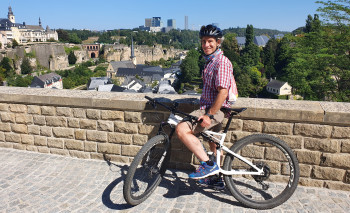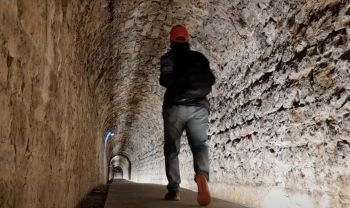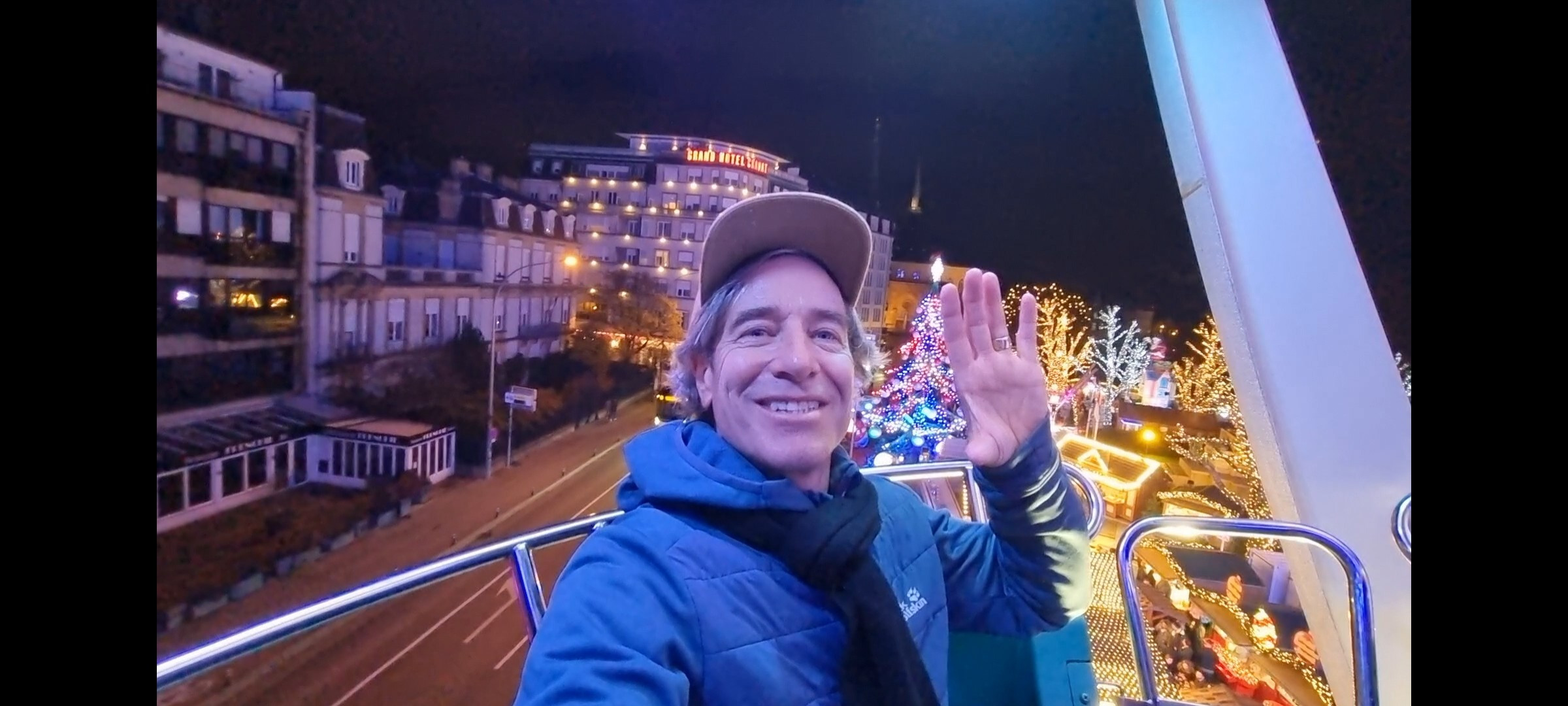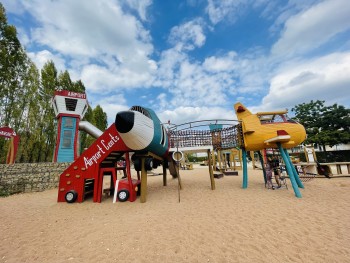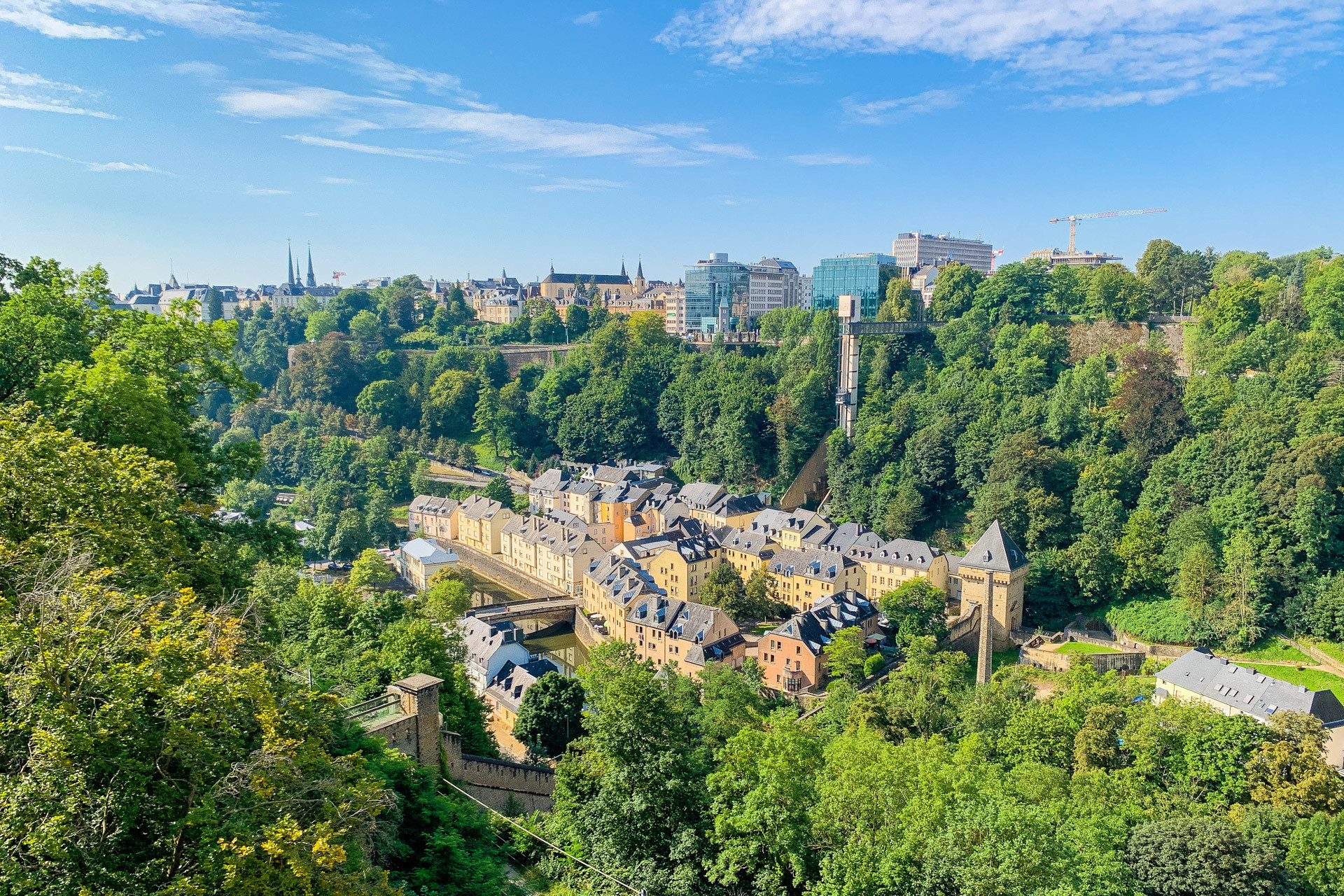
The Bock and Pétrusse Casemates
Join Anabela and Jorge from diariesof as they take a deep dive into the city and discover the history of a little-known world, that of the casemates.
Whether you're a history enthusiast drawn to medieval relics or simply seeking refuge from the summer heat or winter rain, Luxembourg City's casemates provide the perfect escape. These underground fortifications, dating back to the 17th century, have been part of the UNESCO World Heritage Site since 1994. Guided tours take you beneath their protective rock ceilings, making them one of the city's most treasured attractions.
A Treasure Trove of Historical Facts
The Bock promontory has a history dating back to the 10th century, when Count Siegfried built a fortress atop it. However, the casemates themselves were constructed much later. The Spanish began building them in 1644, using the medieval castle's cellars as a foundation. The renowned French military engineer Vauban expanded them in the 1680s, and the Austrians continued the work in the mid-18th century.
For centuries, Luxembourg's fortress, famously known as the "Gibraltar of the North," was a critical component of European defenses. However, the 1867 Treaty of London mandated its destruction to reduce tensions between France and Germany. While the above-ground fortifications were dismantled, the vast underground casemates were too difficult to destroy without risking the city's safety. As a result, 17 kilometers of subterranean galleries and passages remain intact today.
Visitors can explore two sections of this historic system: the Pétrusse Casemates, near the Golden Lady statue, and the Bock Casemates, a short 500-meter stroll away on the Montée de Clausen, close to the historic St. Michael's Church.
Pétrusse Casemates: A Journey Through Time
Imagine descending the same rock-carved stairs as visitors did 90 years ago, torches in hand to light the way. Today, the casemates are well-lit, making exploration comfortable, yet the sense of mystery persists. At the entrance, neon-lit words such as "mushrooms", "champagne", "beer", "bombs", and "Beckett" hint at the intriguing stories within. Our enthusiastic guide brings these tales to life as we delve deeper into the subterranean labyrinth.
The casemates' multifaceted history unfolds before us. After their military abandonment in 1867, they were repurposed in fascinating ways: as shooting ranges, mushroom farms, champagne storage facilities, and even beer concert venues. Our accompanying person’s passion for these stories is contagious.
A Multimedia Experience
A beautifully decorated golden arch pays tribute to the exterior Golden Lady statue. As we venture deeper, the sound of fighter planes echoes through the galleries, reminding us of the casemates' wartime role in protecting the city and its residents, sheltering over 30,000 people.
Later, we encounter a small gallery carved into the rock, where a video projection features the Bock and Pétrusse promontories as narrators. Their engaging dialogue provides rich historical context, offering insight into the fortress, the casemates, and the resilience of humanity.
Following the Foosteps of Secrets
In the illuminated passages, plants thrive, symbolizing nature's resilience. “It’s not just plants that grow here,” our guide points out. "These soft white balls are spider egg sacs." This endemic species, unique to Luxembourg’s casemates, is closely related to the European cave spider (Meta menardi).
As we exit into the serene Pétrusse Valley, the contrast between the historic underground world and the peaceful surroundings reminds us of the city's enduring charm.
Bock Casemates: A Brighter Perspective
A short walk from the Pétrusse brings us to the Bock Promontory and its casemates. These passages offer a distinct experience. With numerous loopholes carved into the rock, the Bock Casemates are brighter, providing stunning views of the Grund and Pfaffenthal neighborhoods.
It's astounding to imagine that 1,200 soldiers and their horses once occupied this space. The casemates, with their well, ensured fresh water for soldiers during sieges. Beyond barracks and stables, the underground complex functioned as workshops, kitchens, bakeries, and even slaughterhouses, resembling a bustling subterranean city.
Notably, in the late 18th century, Austrian Marshal Baron von Bender lived here for eight months, establishing his office, living room, and bedroom within the casemates. Later, in 1964, the casemates became home to a theatre company founded by Luxembourgish actor Tun Deutsch. The atmospheric galleries provided a perfect backdrop for avant-garde plays, including works by Samuel Beckett.
A Journey Through History and Architecture
Luxembourg City's casemates offer a unique blend of history, architecture, and breathtaking views. Whether you're a history enthusiast or simply seeking a memorable experience, a visit to these underground fortifications is highly recommended. You’ll leave with fascinating insights into Luxembourg’s past and its remarkable heritage.
diariesof

Anabela and Jorge Valente, avid travellers themselves, are the passionate founders behind the independent travel magazine, diariesof. With a deep love for authentic experiences, they explore the world on their motorcycle, immersing into foreign cultures and embracing the spirit of adventure.
While they are spending time at home they also like to enjoy and rediscover their home country Luxembourg. In their City Adventure series, Anabela and Jorge share their recommendations and personal experiences with visitors of the capital.

Among many other magazines on faraway destinations, they have also published an inspiring magazine about Luxembourg, available on their website.
Other city adventures



















